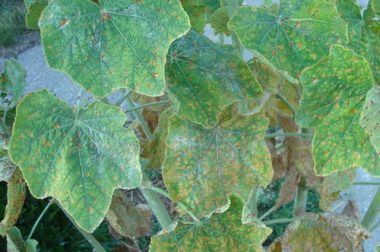
What is hollyhock rust?
Hollyhock rust is the most common fungal leaf disease of hollyhocks (Alcea rosea). Many other ornamentals (e.g., flowering maple, rose mallow) and weeds (e.g., common mallow) in the mallow family are also susceptible. Hollyhock rust can quickly spread, causing stunting of plants and premature leaf drop. In rare instances, hollyhock rust can result in plant death.
What does hollyhock rust look like?
Initial symptoms of hollyhock rust are orange to yellow spots (roughly ⅛ to ¼ inches in diameter) on lower leaves. Irregular brown areas may also develop on stems. As the disease progresses, brown to dark-red raised “bumps” (fungal reproductive structures called pustules) develop on the undersides of leaves beneath the orange/yellow spots. Severely affected leaves often develop holes that give them a lacy appearance. These leaves may eventually shrivel and die.
Where does hollyhock rust come from?
Hollyhock rust is caused by the fungus, Leptopuccinia malvacearum which can be introduced into a garden by windborne spores or on infected transplants. Further localized spread of spores is possible by wind, by splashing rain, or by splashing water from a sprinkler. Warm and humid temperatures favor the growth of the fungus. L. malvacearum can survive the winter in hollyhock leaf and stem debris.
How do I save a plant with hollyhock rust?
Once symptoms of hollyhock rust appear, control can be difficult. If you observe the disease very early in its development, remove symptomatic leaves and dispose of them in your municipal garbage (where allowed) or by deep burying them. Consider follow-up fungicide treatments, although such treatments will be most effective when applied before any symptoms appear. If you decide to use fungicides for control, select products that are labeled for use on hollyhocks (or more generally on ornamental flowering plants) and contain the active ingredients chlorothalonil, mancozeb, myclobutanil, tebuconazole, or triticonazole. When making more than one application, DO NOT use the same active ingredient for all treatments. Instead, alternate the use of at least two active ingredients with different modes of action to help minimize problems with fungicide-resistant variants of the hollyhock rust fungus. Myclobutanil, tebuconazole and triticonazole have similar modes of action and should NOT be alternated with one another. Be sure to read and follow all label instructions of the fungicides that you select to ensure that you use products in the safest and most effective manner possible.
How do I avoid problems with hollyhock rust in the future?
Remove weedy mallow plants (especially common mallow) from your garden; they can serve as a source of L. malvacearum spores. Also, be sure to remove all hollyhock debris in the fall to eliminate another place where the fungus can overwinter. Weeds and plant debris can be disposed of as described above. DO NOT use seeds from infected plants, and inspect new hollyhock plants for rust symptoms prior to purchase. Some hollyhock varieties are resistant to some, but not all, variants of L. malvacearum. Thus use of resistant varieties may not be a reliable method for control of hollyhock rust in all situations. Avoid planting hollyhocks densely to allow better air circulation that will promote more rapid drying of plants, as well as reduced humidity. Water and fertilize properly to promote optimal growth of your hollyhocks. DO NOT water with a sprinkler as this will wet leaves; use a soaker or drip hose that applies water directly to the soil. Fertilize only when needed based on a soil fertility test.
For more information on hollyhock rust:
Contact the University of Wisconsin Plant Disease Diagnostics Clinic (PDDC) at (608) 262-2863 or pddc@wisc.edu.
Authors: Nicole Uelmen*, UW-Madison Plant Pathology
Last Revised: 03/01/2024
D-number: D0061
*Completed as partial fulfillment of the requirements for Plant Pathology 558 at the University of Wisconsin Madison.
Thanks to Diana Alfuth, Adam Chanto, Lisa Johnson, Allison Pfeifer, Scott Reuss, Hilda Uelman and Johnny Uelman for reviewing this document.
A complete inventory of UW Plant Disease Facts is available at the University of Wisconsin-Madison Plant Disease Diagnostics Clinic website: https://pddc.wisc.edu.
Send a Plant Sample for Analysis
Be cautious when self-diagnosing plant health issues. Very few diseases can accurately be diagnosed by eye.
Contact the UW Plant Disease Diagnostics Clinic (PDDC), and for a small fee, clinic staff can examine a plant, determine the cause of the disease/disorder, and provide advice on how to control or prevent the issue.
Download Article

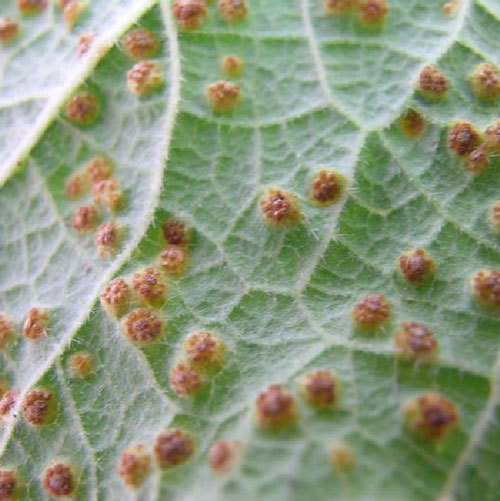




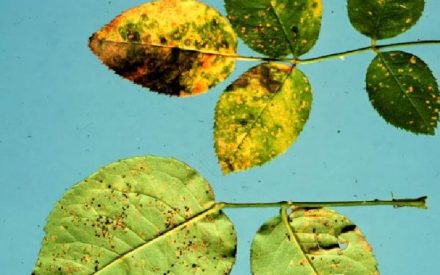 Rose Rust
Rose Rust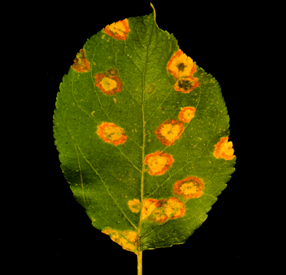 Gymnosporangium Rusts (Cedar-Apple Rusts)
Gymnosporangium Rusts (Cedar-Apple Rusts)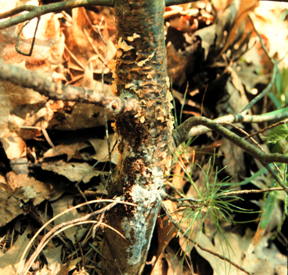 White Pine Blister Rust
White Pine Blister Rust Weir's Cushion Rust of Spruces
Weir's Cushion Rust of Spruces


